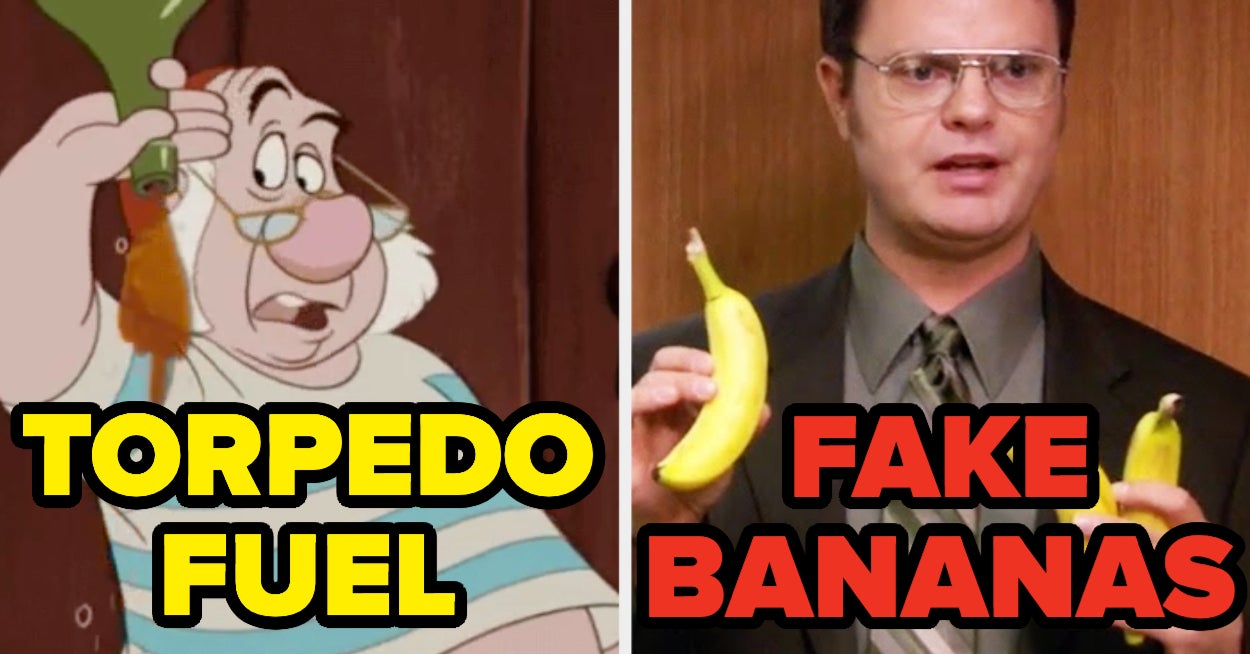
Including torpedo fuel and toast water.
1. Mice
Specifically dormice – you know, the cute Disney-looking ones with big eyes and plump bodies – were a popular delicacy among the upper-classes in Ancient Rome. They would be fattened up and sold to the wealthy, who would eat them cooked in honey and poppy seeds, or stuffed with other meat.
2. Blood
As if black pudding isn’t bad enough, scholars have revealed that Spartans used to chow down on a simple broth of pig’s blood, salt, and vinegar. It was known as Spartan black broth, and even visiting dignitaries to Sparta couldn’t stomach it.
3. Torpedo fuel
In the film The Lighthouse, both characters glug down kerosene (lamp oil), but there are no official reports of lightkeepers actually doing this. WWII sailors, however, did consume something called Torpedo juice, which is basically a cocktail of lemon, pineapple juice, and the 180-proof alcohol used as fuel in torpedos!
4. Beaver tails
Did you know that people used to feast on the tails of beavers during Lent? In the 17th century, the Catholic church clarified that since beavers were semi-aquatic, they technically counted as “fish” and could be eaten during the 40-day period, which is traditionally a time when Christians give up eating meat.
5. Savoury jellied salads
Americans in the last century cooked up some seriously strange salads, but one recipe remains more heinous than them all – the “jell-o salad”. It was usually comprised of chicken or tuna, fruit, and vegetables encased in lime green jelly or another sickly-sweet flavour.
6. Whale poop (sort of)
Ambergris is basically the intestinal slurry a whale ejects from its body after digesting creatures like squid. It’s likely secreted toward the back end of the whale and hardens in the cold water. It was popular in Early Modern Europe, where it became a luxury ingredient in things like ice cream.
7. Black Iguana Eggs
The Mayans used to love these rich, all-yolk eggs which – unlike most bird eggs – have a leathery, rough exterior. The Mesoamerican people would farm black iguanas, which can stay out of water for longer periods of time than their green cousins, and harvest their eggs for food.
8. Fake bananas
In Britain during the 1940s, food was scarce and people were forced to live off of rations which unfortunately did not include exotic fruit from warmer climes. As a result, British people would create mock bananas by adding banana essence to parsnips!
9. Onion nuggets
In the late ’70s, McDonald’s debuted “Onion Nuggets” — bite-sized pieces of onion fried in batter. Onion bhajis are one thing, but I’m personally glad these never caught on. Maccy D’s eventually decided to go back to the drawing board, and from there they came up with the chicken nuggets we know and love today!
10. Lemonade in milk
It was once quite common in the US to mix a little Seven-Up with some cold milk in order to make “soda milk”. In parts of the UK, too, people often mix Coca-Cola and milk. I guess there’s also soda floats and egg creams, so fizzy dairy is still alive and kicking!
11. Cockentryce
This bizarre dish from the Middle Ages is often associated with the Tudor dynasty of England, and consists of a piglet’s upper body sewn onto the bottom of a capon or turkey. It would then be stuffed and roasted over a spit. Similar chimerical items were all the rage during this time period, including the “Roast Without Equal”, which is a 17-bird roast!
12. Toast Sandwich
In 1861, English food writer Isabella Beeton chose to include a simple recipe for a toast sandwich in Mrs. Beeton’s Book of Household Management. It’s basically two pieces of buttered bread with a dry piece of toast in the middle seasoned with salt and pepper. AKA the most British dish ever.
13. Toast Water
The bizarre use of toast in cooking doesn’t stop there! Another 19th century English recipe calls for Brits to toast a crust of bread, then submerge it in water for an hour until the water has a brown tint. Then you simply strain the water and drink it. I don’t know about you, but this one definitely feels like it could become a weird trend in the future!
14. And finally, other humans.
I meannnn, it doesn’t totally astound me that our ancestors might’ve eaten each other thousands of years ago, but I’m talking about Europe in the 16th and 17th centuries, during which time people often ingested medicines made from human bones, blood, and fat to cure all manner of ailments!
CORRECTION
Jan. 10, 2021, at 22:45 PM
Yeah, so, a previous edition of this post erroneously stated that the 6th century Catholic church okayed the eating of unborn baby rabbits during Lent, also known as ‘Laurices’. While this has been a pervasive idea for centuries, and it would have been a banging addition to this list, it’s totally bogus. I returned to my sources to find it was likely just one guy did this, and no one thought he was normal at the time for doing it. Thanks to our readers for pointing this out!
BuzzFeed Daily
Keep up with the latest daily buzz with the BuzzFeed Daily newsletter!





